Effect of the 2002 Manchester Commonwealth Games on Socio-Economic Regeneration of East Manchester
Info: 12666 words (51 pages) Dissertation
Published: 9th Dec 2019
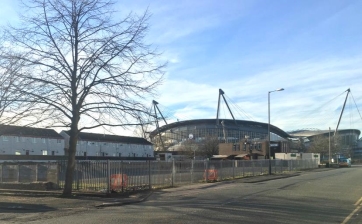
An investigation into the extent the 2002 Manchester Commonwealth Games has provided a successful legacy of socio-economic regeneration for the communities within the East Manchester wards of Ancoats and Clayton, Bradford and Gorton North.
Introduction
Sport led regeneration is the concept of using major sporting events in order to improve policies on urban economic development as well as social integration and solidarity. Sport led regeneration has been a significant tool used by governments and is often a major factor in a country’s pursuit of securing an international sporting event, such as the FIFA World Cup, the Olympics or the Commonwealth Games. Often with major sporting events, a pre determined plan for regeneration is a vital part of the bidding process. However the Commonwealth Games do not require an integrated regenerative plan within a cities bid. The Games have had a lasting legacy within the city centre, but there is a need for an investigation within Ancoats and Clayton, Bradford, and Gorton to assess the regeneration here and whether it has been catalysed by the Commonwealth Games of 2002. It is disputed whether mega sporting events truly have the desired outcome that is expected of them.
In 1999, local residents of east Manchester conceived the slogan ‘Beacons for a Brighter Future’ in order to epitomise the areas bids for both the New Deal for Communities and Single Regeneration Budget Funding. The beacons of the area was a warning that the district was in critical danger of decline, additionally it also represents the hope of the residents that positive news will come if their hard work is rewarded with needed investment for the area (Grant 2010).
2.0 Literature Review
This chapter is a review of relevant literature, exploring key themes surrounding the topic of Regeneration in East Manchester as well as the contribution to regeneration through major sporting events. My key research questions have arisen and have been shaped by the discussed literature. The discussed literature provides a key insight into my area of study, with the work of Camilla Lewis in the East Manchester area of Beswick providing the most significant relevant contribution to my research. According to Smith and Fox (2007), Manchester has been “a city at the forefront of UK regeneration since the late 1980s”.
2.1 Defining Regeneration
Within major events, regeneration is categorised as an integral part of the associated legacy programme and a single agreed upon definition is often disputed. The complexity and dynamism of regeneration projects and the processes they involve has culminated in a multitude of definitions on offer. Sykes and Roberts (2000:17) stated that regeneration is a way to combat major urban problems, for the long term, defining it as:
“comprehensive and integrated vision and action which leads to the resolution of urban problems and which seeks to bring about a lasting improvement in the economic, physical, social and environmental condition of an area that has been subject to change”
Through critique, Turok (2005) has provided an enhancement upon this definition by clarifying that not all urban regeneration is comprehensible, and often some urban problems cannot be resolved, identifying urban regeneration has three distinguishing features: changing the nature of place in order to increase community involvement, an establishment of partnership between stakeholders and finally the embracing of multiple activities and objectives that intersect the main functional responsibility of the central government, depending upon the specific problems and challenges of the area (Turok, 2005). Hausner (1993) supports both the suggestions of Turok (2005) and Sykes and Roberts (2000), adding that a successful regeneration process cannot be fragmented, short term or project based without an overall strategic plan for complete city wide development. However, Tallon (2010) recognises that in reality, regeneration often operates in a divided manner, where not all problems are solved or projects completed. This in in direct contrast to the previous scholars mentioned, who have all taken the position of assuming that when a regenerative process is initiated, it always reaches completion.
2.2 Urban Regeneration and sport within the UK
Urban Regeneration has become an augmented policy initiative within the UK since the 1990’s, being deployed in areas of decline and degeneration in order to provide revitalisation and renewal in these challenging urban environments (Tallon, 2013). The differenciation between traditional urban policy and regeneration, centres around the distinctive attribute that aims to reverse urban decline (Smith, 2012). This is especially considerable, as Manchester around the period of the 1990s had developed into a “basket case” due to the decline of industry.
The previous coalition government within the UK were major advocates for the use of regeneration, more specifically locally driven regeneration to enable growth. Prioritising the the health of the national economy, as a economic growth is key to the preservation and development of a plethora of factors.
2.3 Mega events and Community involvement
Communities have significant roles throughout the whole process of regeneration, with Carmelina Bevilacqua, Jusy Calabro and Carla Maione (2013) supporting this idea through their research carried out on US cities, discussing the role of communities and to the extent they retain a significant position within regeneration (Bevilacqua, et al., 2013). They were able to show that communities that were involved within the regeneration process often yielded the most valuable regeneration assets.
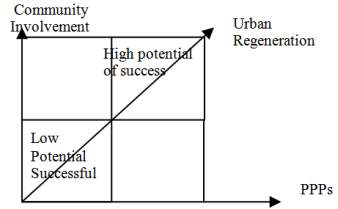
Figure 1-Community involvement and Public-Private Partnerships relations in implementing successful urban regeneration initiatives.
Tavakkoli (2016) identified that if a mega sporting event, such as the 2002 Commonwealth Games, isn’t simply seen as a sporting celebration, then it can be claimed that the event will have the opportunity to supply local communities of the host city with socio-cultural prospects. Furthermore, interest for the games has a stronger poignancy within local communities, especially the areas where the host stadia is located within a close proximity; it has the ability to increase a sporting participation, community activities, local pride and community spirit. Within this report, the ideas suggested by Tavakkoli (2016) will be discussed through application in the wards within Manchester. Jarvie (2006) adds that mega events supply motivational opportunity and potential for those who are often shunned by society to become more involved through sport participation
“increased sport participation can begin to understand and comprehend the socially situated nature of their work and prepares a sense of well-being through fun and joy, guiding to self-fulfillment and prosperous, and motivates social interaction and interrelation for those who may feel socially excluded”
Within her research in Beswick, Manchester, Lewis found that in addition to the sporting benefits and greater community involvement, the place value of the area was significant . Local community members within Beswick who lived on an estate owned by Manchester City Football Club were all too well concerned about the future of their estate; with claims the estate had been ear marked for re-development.
Lewis’ (2015) findings reveal indicate that despite the assurances of legacy and significant regeneration, East Manchester remains firmly in a position of dislocation from the rest of the city and the future continues to be shaped and characterised by uncertainty. Furthermore, Lewis (2015) argues that despite studies investigating the redevelopment of East Manchester, this research needs to be extended; to be inclusive of the voices and opinions of local residents, thus will be able to reiterate the deep-seated belief of unease which her research has uncovered.
This research by Lewis (2015) has been able to inform the research questions of this project; where there is a need to discover within my chosen wards whether these concerns are shared or opposed? Also, how confident of the future are the local communities, and whether the City Council are able to continue or improve the legacy?
2.4 Factors affecting successful regeneration of Mega Events
It is not uncommon to see the use of major events as powerful tools of regeneration, with many host cities using these events to strategically assist designated areas that have underwent unbalanced industrial decline (Smith & Fox, 2007)
One aspect of the bid is planning to ensure the stadia and the other facilities are not left to become ‘white elphants’. This idea of a white elephant does not relate to the use of the City of Manchester Stadium, which has become a prime example of post games stadium usage. Cities are now unsatisfied hosting a sporting event where their role is simply to accommodate cultural celebrations or athletic exploites, however cities now aim to use sport and major events to achieve urban rejeneration (Smith & Fox, 2007). Regeneration of an area understandably requires economic stimulation, however existing resources and employment cannot be disregarded, which would result in limited social regeneration. Fox and Smith suggest that in order to deliver significantly successful urban regeneration through a major sporting event, it requires efficient and effective co-ordination and contact between all relevant parties: Games Organisers, local businesses, community representatives, local government and operating regeneration teams.
Understandng the key factors that establish the regenerative success of a mega event which Smith and Fox (2007) suggest, can be further evaluated further. Horne (2007) expands to state that for regeneration, mega events provide the opportunity of significant technologial advances, with huge global audiences especially for the world cup and for the olympic games as well as this, many of the sports during the commonwealth games of 2002 were shown on television. These technological advances and wider reception of the sport by a global audience, significantly increases the potentail revenue for the host city, with advertisement and broadcasting rights, highly competitve at mega events. Roche (2000) furthers the topic of tv rights and investment, by placing them in perspective:
“where the television rights for Montreal 1976 sold for less than US$30 million, only eight years later the rights for the Los Angeles Olympics brought in more than US$240 million, and by Sydney 2000 this had risen to over US$1 billion”
Horne (2007) goes futher to discus sponsorship arrangements. Pre Los Angeles Olympic Games of 1984, international sport sponsorship at mega events was nil. The Los Angeles Olympics became the culmination point in terms of a significant influx of sponsorship money, providing host cities with an extra source of income. Whitson (1998) believes that these sponsorships can provdide spectacular promotional opportunities
The third and final reason suggested by Horne (2007) is the increasing opportunity to market various commercial products, providing a number of new selling channels “of all manner of commercial products”. These channels allow to the host city to connect and showcase themselves to the global audience, attracting tourism as well as outside investment.
Despite all the benefits and regeneration that mega events can bring, the success on a local scale can provide substantial factors that affect the overall success. Hatherley (2010) opposes the propositions made concerning successful regeneration on this local scale, instead condeming regeneration projects as nothing but vehicles of unessary neoliberalism and gentrification.
??In the time subsequent to the Commonwealth Games, regenerative plans have been used to increase the quality of living for community members in East Manchester. However, in the research carried out by ( Ho, Lewis…not the case) ??
Designed for football fans or locals?
Property prices rising…close proximity to Sport City, stadium and not far from City Centre etc…could this contribute towards gentrification, rather than regeneration.
legacies???????
2.5 Manchester and the 2002 Commonwealth Games
look at Davies 2010, Gratton et Al Jobs+ tourist
At the time, the Games held in Manchester was the largest sporting event that had been held within the UK, and as a result, the prospect both an exciting and formidable task for the organisers. During the 1970s and 1980s, Manchester, especially east Manchester, had experienced a period of heavy de-industrialisation, subsequently leading the area into economic down turn, increased unemployment and decrease of population (Bowdin, et al., 2011). Smith and Fox (2007) believe The primary objective of the Games was to combat these issues and prevent the spiral of decline continuing, by creating a leagcy of regeneration within the east of the city, which was the most deprived area of the city (Smith & Fox, 2007). The large investements of capital from central government supported the city’s integrated regenerative strategies, including the creation of an atrractive area for future investors and businesses, infrastructure that would supply the needs of the community and that of sporting proffessionals and wholesome social, economic and environmental regeneration.
Through hosting the games, the council aimed to increase the place market value of manchester as a whole, hoping to be able to show off its strong cultural and industrial heritage and their ability to host a mega sporting event (Carlsen & Taylor, 2003). The Games organisers conceived the New East Manchester Ltd in order to coordinate and be responsible for the development of infrastructure, and the plans for the future use of the facilities created for the Games, including the athletes village and sports stadia (Carlsen & Taylor, 2003).
Gratton, Shibli and Coleman (2005) claim that the 2002 games, was the first example seen where the planning of a mega sporting event, was completely integrated within strategic framework for regeneration of the city, specifically focussing on East Manchester. One of the initiatives included within the framework set out by the Commonwealth committee was to maximise the economic yield through establishing the Commonwealth Games Opportunities and Legacy Partnership Board. Gratton, Shibli and Coleman (2005) further this by stating the main job of the board was to ensure that the significant positives produced by the games would not disappear once the event was over; hoping that this would continually grow the local economy to support the local regeneration (Gratton, et al., 2005). The research of Gratton et al (2005) was complemented through the release of fundamental data provided by the Annual Business Inquiry (ABI)……SUPPLY DATA….
http://journals.sagepub.com/doi/pdf/10.1080/00420980500107045
Gratton,( et al. 2005) stated their was an increase of employment of the Games, 23% increase within the construction sector, employment within hotels and restaurants increased by 14%, and in addition to this, employment surrounding the sporting and cultural sector increased by 24%. Gratton (et al. 2005) confirmed that this level of increase within employment, was not dissimillar to Commonwealth games events that had preceded 2002, these games maintained employment distribution levels that were rather consistent.
In her research, Camilla Lewis discusses the potential dislocation and uncertainty that is surrounding East Manchester. Within Beswick, she concluded that the despite critiques claiming that in the process of regeneration the community were in direct opposition to each other, this was not the case. To further this, the regeneration of East Manchester has come under opposition, due to what Lewis (2015) specifies as the support for entrepreneurial forms of urbanism. This has notable consequences to deprived areas, which according to Raco (2003), have been severly damaging as regenerative efforts have not been able to achieve crucial benefits for the local residents. However, as Lewis (2015) noted, many of the residents of east Manchester stayed true to their identity and place of being, often bringing up the history when the future looked uncertain; suggesting that personal and place identity shape who we are, said Massey (1995).
2.6 Stadia and area Development
The location of the main stadia and venues were in East Manchester with Smith and Fox (2007) stating that this was of no coincidence, and the venues had been deliberatly located here as the area was in desperate need of regeneration. Smith and Fox (2007) add to this point by indicating that despite the location, the games did not assist in an already developed plan, but rather prompted the regenerative effort after the decision was made to to award Manchester with the Commonwealth Games. However, for Horne (2007) these sports stadia and often other infrastructure are tools of misleading governments and the public in order secure an increased amount of investment for future projects approved; a point that is supported by Flyvbjerg (2014) who added that if the people knew the real cost of the projects such as sports stadiums from the start, no project would ever be approved.
The Four ‘Knowns’ of Sports
Mega-Events
2.7 1992 Barcelona Olympics and their legacy
The City council of Barcelona believed that the games were able to help transform the city from a typically industrial city, to one that was postmodern and flexible (University of Lugano, 2005). In addition, after the Dictator Franco’s regime ended, Barcelona found itself underdeveloped after years of neglect, which had to be counteracted. Where Barcelona had a regime that denied it the chance of development, Manchester had years of steady post-industrial decline, but both share the fact they hosted a mega sporting event as a root to their regeneration success stories. The dominant focus of the organisers on reversing the neglect and hindered evolution of the city is reinforced by Varley (1992), who revealed 83% of total expenditure from the Games was invested into urban renewal, rather than into Sport; including a rerouting of the coastal railways system, improvements made to the city’s metro system, the airport was expanded and redesigned, and the telecommunication systems were upgraded and modernised (Varsey, 1992). Essex and Chalkley (1998) agreed with this point, by adding that the games had become the most recognised example of outstanding urban development, where the games have triggered large scale urban enhancement, having a substantial effect on the host city. and this is still true today, with no other Olympic games having the same effect.
Gold and Gold (2008), furthered this point by indicating that the Games were able to become a meritorious case of success, restoring the Summer Olympics as the acme of events for place marketers and urban regenerators (Gold & Gold, 2008). Ferrari and Guala (2017) expressed that as wellas being a succes, the games and the subsequent legacy was able to completely transform the city’s image from industrial, to that of an attractive cultural tourist hot spot (Ferrari & Guala, 2017).
The similarities between Barcelona and Manchester, pre-games, are exceptional. Barcelona was suffering from a deterioration of its traditional economic base of engineering and other forms of manufacturing since the 1970s and 1980s, due to its oversight from Franco’s regime, world recession and the effects of increased global competition; Barcelona had no choice but to re-invent itself or face an uncertain, but inglorious future (Essex & Chalkley, 1998).
This study has been chosen in order to address regeneration at specifically ward level within Ancoats and Clayton, Bradford and Gorton.
-Communities
Aims and Objectives- needs revising
The aims of the research are to:
- To identify and asses the main socio-economic regeneration projects within communities as part of the 2002 Manchester Commonwealth Games Legacy
- To identify whether the Games were a successful catalyst for regeneration within the research wards
The objectives of the research are to:
- To demonstrate the consideration given to communit regeneration by the Manchester City Council and associated regeneration bodies.
- To compare and contrast the regeneration of Manchester within the wards of Bradford, Gorton and Ancoats and Clayton
- To discover whether the
Research questions
The aim of thi research will be answered through the chosen research questions:
1) To examine the community perceptions and involvement in the regeneration from the Games.
2) To examine the distribution levels of regeneration within the chosen wards.
3) To establish the aspects of regeneration that have developed East Manchester
4) To establish how the Games have been able to change and adapt the image perceptions of east Manchester.
5) To establish what still needs to be done in order to ensure the continued legacy of regeneration.
3.0 Research Methodology
3.1 Introduction
Methodology ‘refers to the overall approach to the research process, from the theoretical underpinning to the collection and analysis of the data’ (Wisker, 2009). The aim of this chapter is to identify and discuss my chosen data collection and data analysis methods that have been used as part of this research project. Throughout, reasons and justifications for my methods will be used. All chosen methodological approaches for the researc have taken careful deliberation over concerning factors including time, available resources, ethics and any other limitations. This is to demonstrate that my chosen methods are not simply good options, rather that they have worked the best when they have been deployed (Denscombe 2012).
3.2 Primary and Secondary Data
Data collection is broken down into two areas, primary and secondary data. Primary data is data that has been collected by the researcher for the specific research problem at hand, using practical methods that fit the research best (Hox and Boeije 2005). In addition to this, each time primary data is collected, new collections are added to the existing stores of knowledge, increasingly this material created by other researchers becomes available to be re-used by the research community; it is then that this data can be defined as secondary (Hox and Boeije 2005). Effectively, this data has been collected for a different purpose, to be re-used for a different research question.
Primary data involves the first-hand analysis of the data collected, whereas data achieved through the process of secondary data collection, will involve the re-analysis of said data
After careful deliberation regarding the strengths and weaknesses of primary and secondary data collection, it was decided to proceed with a mixed method. The mixed method approach is critical for this research project, allowing for significant, primary data to be collected in addition to secondary data that is vital for critical analysis.
3.3 Qualitative and Quantitative Research
When undertaking any primary data collection, the researcher must first make an informed decision on the type of data they are collecting; quantitative, qualitative or a mix of both methods.
There are two types of research methods, Quantitative and Qualitative. Both these methods involve significantly different paradigms as stated by Holliday (2007). Quantitative research is a method of data collection that is primarily objective and used to acquire results from pre-created hypotheses and concepts to develop a theory. Whereas qualitative research is primarily an inaugural process which involves understanding of the complexity, detail and the context of the designated research subject (Hox and Boeije 2005) . Quantitative research is seen as the more simple option in terms of analytical opportunities as it deals with facts and numbers, rather than being subjective. FIGURE below highlights the key differences between qualitative and quantitative research.
| Qualitative Research | Quantitative Research | |
| Objective | To gain a detailed understanding of underlying reasons, beliefs, motivations | To quantify data and extrapolate results to a broader population |
| Purpose | To understand why? How? What are the influences or contexts? | To measure, count, quantify a problem. Relationships in data |
| Data | Textual Data | Numerical data |
| Study Population | Small number of participants or interviewees, selected non-randomly
Referred to as participants or interviewees |
Large sample size of sample
Referred to as respondents or subjects |
| Data Collection | In-depth interviews, observation, group discussions | Population surveys, opinion polls |
| Analysis | Interpretive | Statistical |
| Outcome | Develop initial understanding, identify and explain behaviour, beliefs or actions | Identify prevalence, averages and patterns in data. To generalise to a broader population |
Figure 2-Quantitative data versus Qualitative data. Source- (Denscombe 2007)
As we are able to note within FIGURE there are many comparisons to be made between both types of methods throiughout the whole process of research
As a result, a mixed method approach to this research has been selected as it allowed for convergence, corroboration and correspondence of results from multiple different methods (Greene, et al., 1989). This use of more than one method, has been able to compliment the findings of the research, thus providing an increasingly broader picture of the research subject (Denscombe 2014).
3.4 Semi-structured Interviews
Research interviews are a form of qualitative, verbal data collection which uses the answers of interviewers’ questions as a source of data (Flick 2014) (Denscombe 2014). Semi-structured interviews are a way of asking questions consisting of implicit assumptions about a specific topic face to face in a style that is not assosciated with a normal conversation (Denscombe 1983) (Silverman 1985).
In depth face to face interviews were defined by Hennink et al., (2011) as:
“a method of data collection that involves an interviewer and an interviewee discussing specific topics in depth. In depth interviews may be described as a conversatioin with a purpose; the purpose is to gain an insight into certain issues”
In depth semi structured interviews explore information on individual, personal experiences from individuals who are familiar with the area of East Manchester and relevant regeneration projects; thus able to capture those individual voices, opinions and expertise (Hennink et al., 2011). In addition to this, semi structured interviews have the advantage of being principally revolved around the idea of self-reports; what people say they do, what they say they believe and what opinions they claim they have and this was the data I was looking to secure (Denscombe 2014).
Semi-structured interviews are most valuable when the interviewee is either an expert or highly knowledgeable, a judgement was made on my part when selecting appropriate interviewees within the desired subject matter (Gomez and Jones III 2010).
As part of the data collection I conducted semi-structured interviews, consisting of prepared, open ended questions, allowing the interview to be guided, and decisively flexible, giving room for additional views and topics from the interviewee; an advantage they have over structured interviews which completely opposes the fact of being flexible. The format of the reply was through answers consisting of statements in response to the questions.
After interview requests were made to thirteen potential candidates, two semi structured interviews were undertaken taken with the local councillor for Gorton North, Councillor John Hughes, in addition to the current Strategic Director of Manchester City Council, Eddie Smith; who previously held the role of Head of Regeneration within the council, in addition to being the Chief Executive of the urban regeneration company, New East Manchester Ltd. Both interviews in capacity flowed in a positive manner, without the interviewees needing to be guided back on to the line of enquiry. Furthermore, both interviews allowed for a more political response in regards to what they perceived the benefits to the community were to be, thus allowing for analysis with other research methodology.
In order to analyse the data from the interviews, a method of coding was undertaken. Transcribing then coding the interviews allowed me to be able to contextualise themes and central issues in relation to the questions I had asked (Berg 2004). The coding of my interview transcripts were broken down into 4 sections, looking at relevant responses throughout that were either key, positive, negative or a conflict of interest APPENDIX … AND …
3.5 Questionnaires
Questionnaires are useful data collection method that commonly involves a large number of respondents. A rejection of the Likert scale was a decision made due to the research not wanting to be suggestive towards the respondent, allowing their responses to be a true reflection of their thoughts and opinions.
For this research, questionnaires were constructed with the basis of their questions under the open ended category. The majority of questions were open ended (see appendix), and subsequently this was able to allow the respondent’s answers to be completely formed of their own words, likewise, respondents chose the depth and lengths (Denscombe 2014). This style of questioning ensures that responses are as expressive as the respondent requires, allowing a generous depth of response.
On the other hand, open ended questions can pose two disadvantages to researchers. Firstly, they demand more from the respondent in terms of efforts; furthermore can reduce their willingness to take part in the research. Secondly, the collection of data can leave the researcher with a ‘raw’ data, which can be time consuming to organise and analyse (Denscombe 2014). Supplementary to this, analysis of closed questions simply requires
For this research, questionnaires contained a low number of closed questions included at the beginning of the questionnaire, for the sole purpose to understand the age, gender and locational details of a respondent. Closed questions are structured to the extent to which the respondent can only provide answers that have been generated by the researcher, and this is why the further questions were open ended. The advantages and disadvantages of closed questions are a direct mirror to those of open ended questions.
It was concluded that in order to carry out this research, open ended questions were the most appropriate in order to achieve responses that could add depth and further opinions of the respondent, providing more data. Moreover, the approach taken for this research would be specified as a questionnaire taken in the style of a structured interview. This method was deemed the most appropriate for my research as it allowed the respondent to respond with a “yes” or “no” or “unsure”, with the opportunity for them to follow their answer with reasons for their response, which was more often than not the case.
Questionnaires were used within the 3 wards, taken at locations within each. Within Gorton North, questionnaires were completed outside the entrance of the Tesco superstore and the Gorton Indoor Market. This location was chosen due to its centralised position within Gorton North.
Within Bradford, questionnaires were completed in the area surrounding the Beswick library, Leisure Centre as well as Alan Turing Way.
Questionnaires regarding the ward of Ancoats and Clayton were taken within the vicinity of the ASDA superstore, along Bradford Road, North Road and Briscoe Lane.
Questions included were designed with ethical considerations in mind; there were no sensitive or potentially embarrassing subjects. Respondents were not put under pressure in any circumstance, with their right to not answer any questions they wished not too. If any respondents became uncomfortable due to an aura of pressure, it would become progressively likely to answer dishonestly (Denscombe 2014).
All questionnaire respondents were selected using a random sampling technique, in order for the data collected to show absolutely no bias. In total, questionnaire responses were: 12 in Gorton North, 20 in Ancoats and Clayton and 15 within Bradford, resulting in 47 total responses.
3.6 Ethnography
Ethnography can be defined simply as the description of an ethnic group. Ethnographic research is the description of the way of life of a culture; where the focus of the research is most often a community in order to achieve a holistic picture of said community Hennink et al., (2011). The ethnographic focus of this research is the communities of each chosen ward. Ethnography is considered to be the hallmark of cultural anthropology (Spradley and McCurdy 1980).
Often ethnographic researchers participate in the lives of the study community through living amongst the population, taking part in local activities and festivals for example. A disadvantage of ethnography as a research method is its time consuming nature, and due to the constraint of time, 4 days of ethnographic research was achieved.
Liamputtong and Ezzy (2005) describe the ethnographic approach to Geetz (1973) interpretive theory, affirming the requirement to establish behaviours and actions within local framework in the pursuit of understanding culture, not through universally understood laws, but by analysing interpretations and searching for meaning. The advantage of using ethnography within this research is the ability of the method to greater understands the chosen community, with the ability to provide a holistic picture (Hennink et al. 2011).
As part of my ethnographic research I vistited multiple sites accorss the wards engaging in discusion with those that were present regarding multiple issues. It was important to be able to associate myself with the local communities of each ward as this would provide me with a greater understanding of them. Within Ancoats and Clayton I visited one of the children centres hopeing to be able to be a part of the local council drop in sessions which would allow me to speak directly to a member of council, but also hear what concerns the community was having. However, the council representatives did not show, though I was able to converse with other community members who had showed. Within the ward I also vistited the Velodrome and BMX centre. In Bradford ward I made my way around the Etihad Campus, Beswick libray and the aptly named residential streets of Commonwealth Avenue, Athletes Way and Stadium Drive, helping me to understand how lives have changed post Games. During my research in Gorton North I visited the indoor market, Tesco superstore, as well as a local hotel and the Belle Vue facilities including the National Speedway track.
Within all wards I capitalised on any opportiniy to converse with residents and investigate the local facilities; relevant findings are expanded and developed upon in chapter 5.
3.7 Triangulation
Cohen and Manion (1994) define triangulation as, ‘the use of two or more methods of data collection in the study of some aspects of human behaviour’. The data taken from the interviews, ethnography and questionnaires was tested together in order to uncover potential patterns and/or anomalies. When using more than two data sets, the benefit of triangulation is that it can provide a clearer understanding to the found data, providing increasing validity to the data (Thurmond 2001). However the one disadvantage of carrying out triangulation is the methods time consuming manner (Thurmond 2001).
3.8 Focus Groups
Focus groups were not selected due to the heavy consumption of time. The main advantage of focus groups is their ability to collect data in a group environment, ensuring a variety of perspectives however, the disadvantage is focus groups require a confident and skilled moderator, to manage the group dynamics and maintain conduct (Hennink et al. 2011).
3.9 Summary
In this chapter, the strengths and weaknesses of a range of research methods have been outlined, as well as the justification for the most appropriate and selected methods. Ethical concerns and precautions have been raised and addressed, as this is vital to warrant no negative repercussions a s a consequence of the research.
4.0 Setting the Scene: A Background to Manchester and the wards of Ancoats and Clayton, Bradford and North Gorton.
In this chapter I will be discussing background information in relation to the chosen wards, in order to be beneficial through establishing a clear picture and understanding of the wards.
4.1 Manchester
Located within the north west of England, Manchester has a population estimated to be around 530,300 at the end of 2016 holding the position of the 6th most populated city in the UK (World Population Review , 2016). Manchester is positioned within the Greater Manchester Metropolitan area, with around 2.5 million people residing within the area, making it the the 2nd most populated metropolitan area, behind London’s Metropolitan area. In 2014, Manchester was awarded with the status as a ‘Beta Global City’, with the Globalization and World Cities Research Network noting the city’s economic state, ‘modern’ status, social and scientifc credentials.
4.2 Ancoats and Clayton
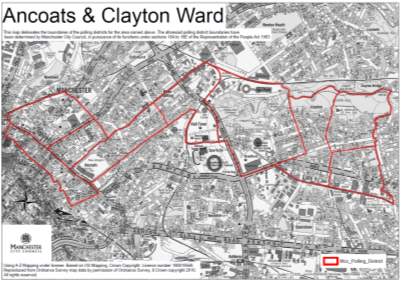
Figure -Ward Map of Ancoats and Clayton
Ancoats and Clayton is a ward situated within the Northern Quarter of Manchester, with the latest census of 2011 indicating the population to be 16,141. The area was one of the pioneering areas to help start the industrial revolution, becoming the most noteworthy industrial area within Manchester. During the 1970s and 1980’s, Ancoats and Clayton saw an immense decline of industry and population, leaving the area dealing with a subsequent legacy of poor housing, increasing crime levels, high unemployment as well as poor health. The ward is the product of collaboration between the area of Ancoats as well as Clayton.
The ward has received significant investment and regeneration since the 1990’s; many listed mills and warehouses have been converted into residential spaces and business properties. However there is still significant terraced housing and a large amount of council estates. In addition to this, Victoria Square was developed which has been classed as one of the original social developments in the country. The ward is home to part of the Etihad Campus which includes an array of sporting facilities: Velodrome, Indoor BMX Centre and Manchester Regional Tennis Centre. Ancoats and Clayton shares its southern ward border with Bradford, splitting Sport city in two.
4.3 Bradford
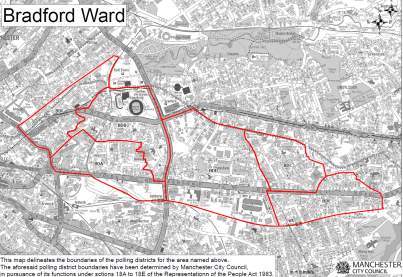
Figure 3-map of Bradford ward
Positioned approximately two miles east from East Manchester is the ward of Bradford with 43.9% of the wards population reside in social housing. In a space of 503.6 hectares, Bradford has a population of around 17,000. In similarity to the two previous wards, Bradford has an industrial history with factories, steel works coal mine and a power station. The Production of coal within Bradford, now the home of Sport City, first began in the 17th Century and supplied the borough of Manchester with the majority of its coal supply. The coal exploitation allowed East Manchester to thrive in steel and cotton manufacturing as well as the production of power, creating the industrial revolution, with Manchester claimed to be its birthplace (Grant, 2010). However, post 1970s the industries in the area dissolved leaving swathes of baron, undeveloped land with a littering of poor quality of housing, high crime rates, poor health and the lack of facilities.
In relation to the 2002 Commonwealth Games, the ward became home to the Etihad Stadium, formerly knows during the Commonwealth Games as, the City of Manchester Stadium. This stadium is the home to Manchester City Football Club and their facilities, including their training pitches and youth facilities. In addition, the ward is home to the National Squash Centre and Manchester Regional Arena
4.4 Gorton

Figure 4-Map of Gorton North Ward
Gorton is an area within the City of Manchester, with the most recent demographic statistics of the 2011 census indicating the population was 36,055. The area of Gorton is split into two governmental wards. For the purpose of the research, the research will be carried out within the ward of Gorton North, not Gorton South.
It is an area which is predominantly residential, though does hold a history of accommodating businesses and industries. Significantly, Gorton north is the home of Belle Vue, which was home to a zoo, amusement park, speedway and exhibition many public and private entities. Although the area has changed, it still retained the greyhound track, as well as the additional facilities including the National Basketball Performance Centre, Belle Vue Leisure Centre and the National Speedway Stadium.
5.0 Findings and Data Analysis
5.1 Manchester Commonwealth Games 2002
Prior to Manchester being awarded the 2002 Commonwealth games, they had failed in their bids for both the 1992 and 1996 Olympic Games, with it subsequently being announced by the Manchester City Council Leader of the time, Graham Stinger in 1994, that Manchester had the intention of becoming England’s nomination for the 2002 Commonwealth Games. In November 1995, the Commonwealth games Federation awarded Manchester the 17th Commonwealth Games (Grant 2010). At the time the Games was heralded as one of the largest sporting events in the world, with a sports program that consisted of 3,690 athletic participants, covering 17 different sports and representing 72 nations (Preuss et al. 2007).
New Deal for Communities (NDC) and Single Regeneration Budget (SRB) round 5 were the two most pertinent initiatives secured for East Manchester and their regeneration aspirations. New Deal for Communities was a Governmental regeneration scheme that was created by the UK Government in order to provide neighbourhood renewal that was strictly community led to the poorest of neighbourhoods in the UK. Manchester secured the funding from the SRB in the fifth round, and within that round, central guidance was given in order to inform all the bidders of what the needs and priorities were to be within their specified region, for the first time (Rhodes et al. 2003). The combined budget from both of the initiatives was placed at around £77m; NDC contributing £51.725m and SRB providing £25m.
In relation to these initiatives, New East Manchester Ltd was created as an urban regeneration company which was a joint enterprise between Manchester City Council, North West development Agency and English Partnerships in order to achieve strategic regeneration within east Manchester for the long term future, aiming to lead on physical regeneration through economic initiatives, with the ambition of marketing and promoting the area to new businesses, investors and crucially, residents.
5.2 Gorton North: A Forgotten community or a case of slow development of potential?
5.2.1 Sports Facilities
Questionnaire responses collected from vicinity surrounding the complex containing the Gorton indoor Market and Tesco heavily indicated the recognition of the Belle Vue facilities. A number of respondents stated they believed that the facilities provided something noteworthy in the community, a place they did not use themselves, further more they stated that they were aware of how it was an asset to the community, with one respondent stating that they personally didn’t use the facilities, nor did they know anyone within their family who did, however they were able to understand that who uses any of the facilities, but was able to comprehend the potential benefits that it has to offer,
“Personally I’m not a user of those facilities, and I don’t go to watch the bike racing; though I do understand how they are important to the rest of the community” (Questionnaire, 2017).
The regeneration of the Belle Vue stadium was the instrumental project led by local Councillor Hughes. The Belle Vue National Stadium is the recent home to the local Speedway team, Belle Vue Aces, who have been racing within east Manchester since 1928. However the recent history of the venue has seen the stadium redevelopment placed under threat, with financial mismanagement through previous directors, where there were deficient rent payments to the council, culminating in the eviction of the Belle Vue Aces only 7 months after the team moved into their new home stadium, through the revoking of their tenancy licence. The new Belle Vue stadium was opened in April of 2016, costing just above £8m, £1.3 million more than the forecasted outlay of £7m (Manchester Evening News , 2016). It was suggested by Councillor Hughes that the Belle Vue stadium and facilities would never have even been able to consider this regeneration project without the Commonwealth games occurring. One questionnaire respondent questioned the real motive behind the stadium and sports facilities:
“Yes we have those [Belle Vue] facilities, but I don’t know whether they were done there for the locals, or more likely done because it’s not far from the rest of the sporting places, it’s to make us feel a part of it” (Questionnaire, 2017)
Through ethnographic research I had the opportunity to visit the Speedway track on the night where operational tests and safety procedures were being undertaken. This provided me with the opportunity to converse with local residents who were also in attendance. Unsurprisingly, all were speedway fans and fully supported the recent developments surrounding the Belle Vue facilities, specifically the speedway track. However, it became sharply apparent of their frustrations over the stadium, with the combination of how the finances were managed and the licence revoking was described by one resident as an, “absolute farce”. However, they were keen to show me the new renovations of the stadium, specifically the new hospitality suite. The idea of the suite was to provide extra financial income, on days where there is not a scheduled race meet, offering an extra space within for the community, Councillor Hughes believed the space could offer the community a space for recreation and planned events, something that is noticeably lacking within the area of Gorton. This space both benefits the residents of the ward and the local council by providing a social space for residents as well as financial income for the council.
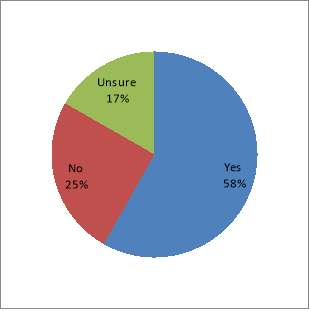 During ethnographic study, interviews and questionnaires, it was identified that there is almost an even split between whether the facilities at Belle Vue are significant for the community of Gorton or not. As can be seen in Figure 58% of the respondents to the question believed that it is significant, with 25% responding no and 17% were unsure of its significance.
During ethnographic study, interviews and questionnaires, it was identified that there is almost an even split between whether the facilities at Belle Vue are significant for the community of Gorton or not. As can be seen in Figure 58% of the respondents to the question believed that it is significant, with 25% responding no and 17% were unsure of its significance.
Figure 5:Chart showing participants responses when asked about how significant they believe the facilities of Belle Vue
Councillor Hughes believed that the new sports facilities were going to be a success and a significant addition to the community, and maintained that attitude even after it had been completed;
“we’ve now got, off Kirkmanshulme Lane, a sports village which takes in the new national speed way stadium. I am very proud to have had a big involvement in that. I was the one kept going knocking on doors at the time can we have more money please” (Interview, 2017).
Dhesi (2000) states that small scale stadiums and facilities are examples of socio-economic infrastructure that councils can integrate within communities in order to better them and figure backs up, to an extent, these claims.
5.2.2 Social Spaces and Gorton market
The lack of social spaces for the residents of Gorton was a recurring theme featured throughout all investigation methods. During the semi structured interview with Councillor Hughes, he stressed the issue that Gorton doesn’t have any recreational spaces within the area for people to go out and enjoy themselves, as they were able to do in time gone by;
“There is nothing like that at all and there is not even a Wetherspoon… we need things like that…we seriously need stuff for people to take a bit of a pride in to lift the area” (Interview, 2017)
Unfortunately for the residents of Gorton, interview participant Eddie Smith explained that Gorton did not fall within the boundary created by the governing bodies of the funding initiatives, explain that if they were to expand these boundaries, the council, nor regeneration companies would have been provided with any more investment, in effect the current budget would have to be stretched even further, he said;
“In Gorton…looking at the history of New East Manchester Ltd. and the range of governmental programmes that were put in place from 1997 onwards, New Deal for Communities, SRB and so on, all of those programmes and the geography of New East Manchester Ltd. was very tightly drawn around the stadium area…the government funding programmes [weren’t] elastic” (Interview, 2017).
(stadia regeneration, wanted money spent on houses and clean up of the area, Community and Recreational spaces)
Figure 6-Gorton Indoor Market

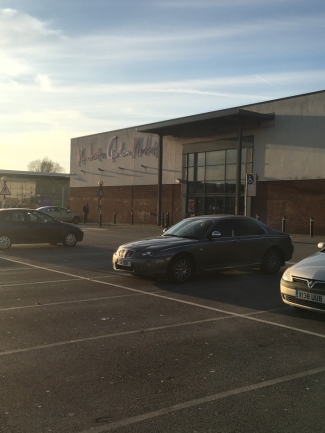 Upon entering Gorton Market the wide variety of stalls was apparent, and the number of cafes and eateries was noticeable. The quality and aesthetic presentation of the stalls were in direct contrast to that of the available shops, lining sections of Hyde Road. Factoring in the market’s sheltered state and the overall presentation; it was not difficult to understand its appeal to the local residents. The space provides the community with a ‘third place,’ an idea concocted by Ray Oldenburg, defining this phenomenon as an informal public environment where local people meet on a regular basis, distant from work or home lives, and it is seen as an everyday occurrence with the exception of tourist, who will find the observable fact rather insignificance (Oldenburg 1989). Third places are more commonly associated and utilised within socio-economically deprived areas, and since its opening in 2008, the market has been a centralised part of the local area.
Upon entering Gorton Market the wide variety of stalls was apparent, and the number of cafes and eateries was noticeable. The quality and aesthetic presentation of the stalls were in direct contrast to that of the available shops, lining sections of Hyde Road. Factoring in the market’s sheltered state and the overall presentation; it was not difficult to understand its appeal to the local residents. The space provides the community with a ‘third place,’ an idea concocted by Ray Oldenburg, defining this phenomenon as an informal public environment where local people meet on a regular basis, distant from work or home lives, and it is seen as an everyday occurrence with the exception of tourist, who will find the observable fact rather insignificance (Oldenburg 1989). Third places are more commonly associated and utilised within socio-economically deprived areas, and since its opening in 2008, the market has been a centralised part of the local area.
Source: Author (2017)
Heading towards one of the market stalls, specialising in the business of meat and pastry, I found myself in conversation with the stall owner who was more than happy to have a small discussion with me. Very passionately he delivered his response to my question, in regards to the regeneration he had witnessed in the area; he noted that the most significant and relevant project was the transition of the traditional outdoor Gorton market to a modern indoor market, however succeeding this development, he was unable to specify any other regeneration projects, choosing to consciously overlook the Belle Vue facilities, shrugging it off after I had asked him about it.
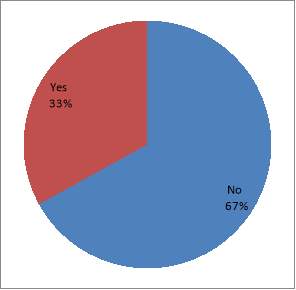 In its simplest form, the fundamental objective of regeneration is to improve neighbourhoods, and from the beginning, this has been a clear outlined effort of Manchester’s regeneration of the east end. One of the key foundations of the standard of regeneration is the quality of the regeneration involving the local residents, as suggested by McGregor and McConnachie (1995). Question 5 of the questionnaire aims to understand the perceptions of the respondent in regards to whether they believed the ward of Gorton North had improved since the Commonwealth games.
In its simplest form, the fundamental objective of regeneration is to improve neighbourhoods, and from the beginning, this has been a clear outlined effort of Manchester’s regeneration of the east end. One of the key foundations of the standard of regeneration is the quality of the regeneration involving the local residents, as suggested by McGregor and McConnachie (1995). Question 5 of the questionnaire aims to understand the perceptions of the respondent in regards to whether they believed the ward of Gorton North had improved since the Commonwealth games.
Figure 7-Chart showing participants responses when asked whether the ward had improved since the Games
Of the 33% that indicated they believed the ward had improved since the games, no response categorically confirmed there had been improvements, with responses consisting of;
“marginally there have been small changes so far, but there hasn’t been anything to make it a significantly better place” (Questionnaire, 2017).
“Not drastically but yes. Everywhere has its bad points and maybe it’s just Gorton has more…but eventually it will improve, I have some faith in the area and those that run it” (Questionnaire, 2017).
in addition to the This indicating his belief in the lack of investment givenMENTION COMPARISOIN HERE WITH OTHER PLACES
5.2.3 Housing
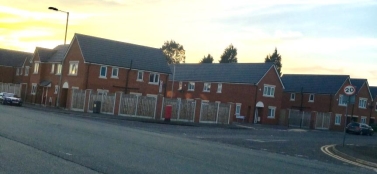 Over half of questionnaire responses (58%) specifically mentioned housing at least once within the questionnaire, all between the question regarding regeneration within the area and the question asking whether the needs of the community had been met. Through my ethnographic research I was able to back up the claims made by the questionnaire respondents and also through the interviews. The houses in FIGURE depict the new housing in Gorton that has been built within the past few years as part of the Strategic regeneration Framework developed in 2009. As raised in the interview with Councillor Hughes, Gorton has been blessed with multiple areas of new housing. Councillor directly related the developments of housing to the commonwealth games, confirming the Games significant link to the housing within the area, in addition to the significance and the appropriate nature of the houses;
Over half of questionnaire responses (58%) specifically mentioned housing at least once within the questionnaire, all between the question regarding regeneration within the area and the question asking whether the needs of the community had been met. Through my ethnographic research I was able to back up the claims made by the questionnaire respondents and also through the interviews. The houses in FIGURE depict the new housing in Gorton that has been built within the past few years as part of the Strategic regeneration Framework developed in 2009. As raised in the interview with Councillor Hughes, Gorton has been blessed with multiple areas of new housing. Councillor directly related the developments of housing to the commonwealth games, confirming the Games significant link to the housing within the area, in addition to the significance and the appropriate nature of the houses;
“The growth is there…all along the Ashton Old Road, there they are building new houses and they’ re building them for fun and they’re building them at a very fast rate. A lot of which are for social houses, affordable social houses. You’ve got One Manchester who builds most of the houses this side of town anyway but their remit is to have so many of their houses they have built as social houses anyway. It is because of the Commonwealth, without that I don’t think we would be anywhere near to what we are now… houses as well and really putGorton back on the map” (Interview, 2017).
In addition to this, one questionnaire respondent who did not live in the ward, but does often visit for family engagements conceded that the new houses are noticeable;
“I drive through the area quite often, going down Hyde road and the new houses along there look very nice, it’s refreshing for the area…but just a bit down you see those hideous shops, something needs to be done about them” (Questionnaire, 2017).
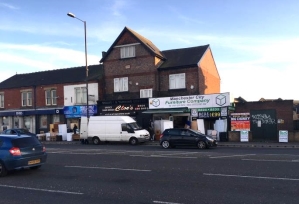
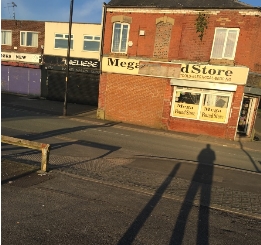 Notably, the respondent raises the issue of the shop fronts along Hyde Road. These shop fronts can be seen in FIGURE and FIGURE and reiterate the fact raised about the unpleasing shop fronts. By stopping opposite the shops in FIGURE, and observing the behaviour of the driver and/or visible passengers when the vehicle was a halt due to traffic, I was able to notice the majority of subjects acknowledged the shops, often with an expression of dissatisfaction.
Notably, the respondent raises the issue of the shop fronts along Hyde Road. These shop fronts can be seen in FIGURE and FIGURE and reiterate the fact raised about the unpleasing shop fronts. By stopping opposite the shops in FIGURE, and observing the behaviour of the driver and/or visible passengers when the vehicle was a halt due to traffic, I was able to notice the majority of subjects acknowledged the shops, often with an expression of dissatisfaction.
It must be noted, during interviews with both participants there was a tendency for both parties to drift from the desired parameters of only discussing the research wards, and for example Hulme and Moss side were specific examples. This is a phenomena that Lewis (2015) encountered in her research within East Manchester, noting that interviewees tended to describe other areas of east Manchester that were well known case studies.
5.3 Ancoats and Clayton, and Bradford: The epitome of legacy within communities?
5.3.1 Housing and the Abu Dhabi United Group
Housing-commonwealth streets-library-abu dhabi united group investment-key how ntheyre involved
The abu Dhabi United Group have been instrumental in the
During the interview with Eddie Smith, a considerble claim was made;
“
As a consequence of the games, Manchester witnessed a considerable housing boom
On 11th September 2003 the housing association Eastland Homes was launched (later becoming One Manchester as a merger between Eastland Homes and City South Manchester) becoming an intrinsic part of the East Manchester’s ability to provide and develop homes (Grant 2010).
Within the gamut of the housing sector, it became clear that the Abu Dhabi United Group were individually the most noteworthy investors. Abu Dhabi United Group (ADUG) was the group that purchased Manchester City Football Club (MCFC) in 2008, and since have not only developed a successful football team, they have further ensured a beneficial impact to the local community. In order to understand how ADUG came to be instrumental within the housing sector, it must first be noted how they came to invest within East Manchester. ADUG is the private equity group that purchased Manchester City Football Club in September of 2008, and in the interview with Eddie Smith, who at the time was an instrumental figure in the establishment of the relationship between ADUG and Manchester City Council, he stated the critical factor of why the group chose Manchester and the partnership the two have entered in order to provide for the residents of the area:
“ Abu Dhabi wouldn’t have bought Man City unless there had been a world class stadium…they only came because of the stadium…in effect having delivered on all of our promises and have shown our capability to be a partner that they can trust and work with in a productive way we have now entered into a long term partnering relationship with Abu Dhabi to develop new residential development on the Eastern side of the city in Ancoats and Clayton and in Bradford which is the Manchester Life development vehicle. That vehicle is committed to delivering several thousand homes and investing at least 1billion pounds. We signed that deal in June 2014 and over 1000 homes are now on site in Ancoats…again you could argue very strongly that the investment has only happened because of the assets we created in 2002 for the Commonwealth Games” (Interview, 2017)
As Eddie Smith had stated above within the interview, 1000 houses have already been built since the 2014. The ADUG were not simply interested in acquiring MCFC, they wanted to create further investment opportunities, hence their critical partnership the City Council.
Figure 8-Frequency of the top 5 responses from respondents in regards to issues from Commonwealth Games
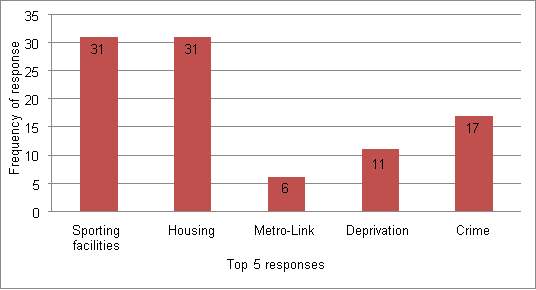
An interesting theme noticed through the questionnaire, was the overwhelming quantity of respondents who mentioned housing, whether negative or positive, with thi being backed up by the emphasis Eddie Smith enforces within the interview. FIGURE shows the frequency of the top 5 responses from respondents in regards to the elements that they believe have either improved or are awaiting improvements since the Commonwealth Games.
The observations noted in this research in regards to residents raising the issue of housing and deprivation within the area is broadly consistent with the research carried out by Crisp et al. (2014) who concluded that regeneration, overall produces a mix of results in terms of tackling deprivation, though the research findings did state clearly that regeneration was most effective when tackling “issues of housing, community safety and the physicalenvironment” (Crisp et al. 2014).
5.3.2 Crime
Before the Games, the area was notorious for I’s crime and its location as one of the areas in the top 1% for deprivation
During the collection of two questionnaire outside the ASDA superstore I began to converse with one gentleman and his sister, who he vistits every 2 weeks in the McDonalds just opposite the superstore. The gentleman indicated how he was so proud of the area he was, as well as how he felt so positive for the future. However, his sister was the complete opposite, sceptically indicating her belief that the she only thought that the future could potentially be positive and this was to continue throughout the rest of the questionnaire. She voiced her concerns rather vehemently regarding multiple factors she believed that the Games had failed to combat and address;
“…private landlords are not making sure their housing is maintained and kept to a good standard, lots of property is boarded up and left empty, fly tipping, crime gone up, with no police on the beat anymore, the area has gone down” (Questionnaire, 2017).
A further 16 responses from a total of 35 responses had mentioned crime. However, when those 16 responses are analysed, 10 indicated that crime was still a problem which needed some form of addressing. FIGURE is a graph to show an indication of the crime statistics of the two wards combined. Due to available crime statistics, the best data set that could be achieved has been January 2011 to January 2017. The FIGURE indicates there has been a varying degree as to which the legacy has been able to deal with crime. Over the past 7 years there is no clearly trend within the data to indicate that crime has been effectively dealt with, thus supporting the claims made by the questionnaire respondents who believed crime to still be an issue. The majority of literature available concerning sports regeneration and crime revolves around young young offenders, however Coalter et al. (2000) stated that large scale projects tend to have a varying degree of success with often little impact; in this case sport is most effective when combined with programmes that address personal and social development. It would have been expected prior to research that a sports led regeneration legacy would have had a favourable effect on a local community, througfh its regeneration legacy, however Davis
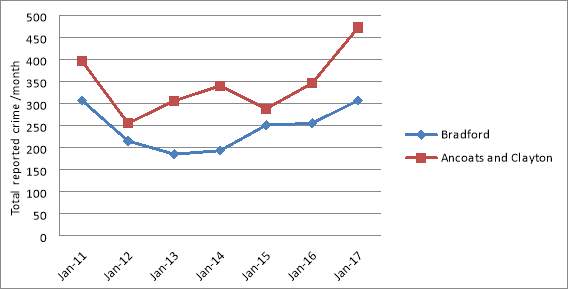
Figure 9-Graph depicting the total crimes reported in January 2011-January 2017. Data Source: (UK Crime Stats 2017)
5.3.1 Sporting facilities
During the Games, Ancoats and Clayton and Bradford provided the home to the sporting facilities, with a clear aim they were going to be reused and play a vital role within regeneration leaving Manchester with a world class facilities and a proud sporting legacy as stated by Maunsell (2004) and backed up by Eddie Smith:
“…we had a very clear strategy for the stadium and the complex, it would become a 365 day a year facility, rather than just relying on 30 days of football and some concerts” (Interview, 2017)
This clear plan, reinforces the idea put forward by Smith and Fox (2007) ensuring that the stadia does not become a white elephant, but instead becomes a part of the community as Tavakkoli (2016) suggested. One such part of the complex that has become something far from a white elephant is the Etihad campus. As I approached this grand area, the whole space was clean and tidy, and you could sense you were walkinbg toewards a apecial place within the communkty, somewhere with priide. Pride is a strong word, often used for the workingf class area. On one side of the Alan Turing Way is the Training facilities and youth pitches, and on the other, connected by an elegant bridge is the Main centre piece, the Etihad stadium. As part of the questionaire, respondents were asked whether they believed that Sport City was a key addition to the Community.
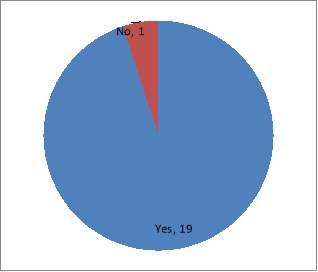
Figure 10-Answers to whether respondents believed that Sport City is a key addition to the community
Within Ancoats and Clayton, FIGURE shows and overwhelming belief that Sport City is a key addition to the community, with 19 responses indicating yes, and only 1 responsing with no stating that the facilities brought “unessary attention and congestion,” to the area. This incredible response reaffirms the ideas of Smith and Fox (2007) and Gratton et. al (2005) in their beliefs that mega events can supply sports stadia that is incredibly valuable to both the community and as a critical asset for economic prowess for the operators.
One respondent expoanded by stating his believed significance of the sports facilities within Sport city, going even fiurther to commend Manchester City;
“the place is significant for the community…we’re mostly [Manchester] City [Football Club] around here and what they are doing for the area is fantastic…their City in The community program shows that they want to help the locals and that’s just great” (Questionaire, 2017).
With MCFC relocating to the stadium complex within Bradford, in effect they brought the club ‘home’. The roots of football are firmly planted within a working class tradition, a tradition still witnessed within the wards of Ancoats and Clayton and Bradford. As noted within the literarture review, Massey (1995) stated that most people believe that places are part of who they are, consequently the transformations of the local landscape have deely personal inferences. Lewis (2015) found the relationship between MCFC and the local community to be on parrallel to that of my research, however she was able to further note that multiple locals believed that the needs of the football club were being placed ahead of the local people. The relocation of MCFC to its current location follows the Neighbourhood effect idea suggester by Thornley (2002). One such scenario of the theory is the idea that a sports clubs stadium now finds iteself surrounded by inner city housing, with little or no avaliable room to expand and modernise. When MCFC moved from their old ground in Moss Side, they had a perfect new stadium and an area of brownfield, disused industrial land that can be deveoped on.
5.4 Critical Comparison
5.4.1 Housing
After close analysis and research in to each ward, it would be appropriate and necessary to compare the regeneration raised on an overall scale. Starting with housing, it was earlier stated
5.5 The Future
So far this project has been able to depict factors of the legacy from the 2002 Commonwealth Games that affect the communities within the research wards for a period of the last 15 years. However, within data collected, especially through the interviews, plans for the future of these communities, especially Gorton were discovered. Due to the nature of this section however, the ideas created and their potential are purely speculative, but do provide value as it indicates the intent by Manchester City Council to continue their development of the legacy.
Within the three wards covered, it is Gorton that requires the most attention, and this is a claim that has been backed up by Eddie Smith during the interview.
A recurring theme within the interviews was the future plans for Gorton, with the idea of the Gorton hub being mentioned on numerous occasions;
…we have always given our principle support to it [Gorton] and we are looking at the district centre and in particular ensuring that the public sector plays its role in terms of bringing jobs to the Gorton area and starting to contribute to refocussing the role and purpose of that district centre, hence the Gorton Hub” (Interview, 2017)
“…going to have a new doctors surgery, health clinic there all the rest of it in a hub. It might take four or five years for it all to be completed” (Interview, 2017)
This hub is a proposal that has been passed in February 2017, and is set to open in 2019. It is a large multi-service partnership involving the City Council, Department of Work and Pensions, One Manchester, Central Manchester Clinical Commissioning Group and the Central Manchester Foundation Trust and will be the home to a complete range of health, social and public services all within one site (Manchester City Council 2017). Of all the questionnaire respondents, one was able to state they were aware of the potential new healthcare hub;
“I read online or somewhere that there is to be a new healthcare centre set to come to the area, and it would be good for the area” (Questionnaire, 2017).
As this respondent suggested, the hub would be favourable addition to the community, having the potential to develop the socio-economic regeneration of the area. The Gorton hub would be a part of the Strategic Regeneration Framework that
6.3 Limitations of the research and recomme ndations for the future
As part of the research project at hand, it is important to be able to identify the aspects that were not ideal, thus limitating the research. First and foremost, in regards to the interviews; initially 7 councillors and the east Manchester Regeneration team were emailed to request an interview. Within the first week I had only received a single positive response. In subsequent weeks, two reminder emails and two phone calls were made, with no answer or reply to my requests. The phone calls were made to enquire whether it would be possible to arrange an face to face or telephone interview. Therefore, due to the alarming lack of responses I emailed a further 3 councillors. This did not produce any further positive results, with all of the potential respondents apart from the 1 success (Councillor John Hughes), had either not responded or rejected the request. The second interview (Eddie Smith) was only possible as a direct consequence of the first interview, after being arranged by council members. Despite this, when paired with ethnographic research and questionnaires, a good understanding of key current trends was able to be achieved. Whilst the sample size was not that which would have been seen as a generalisation of the area’s residents, it was of a sufficient quantity to be able to be able to understand a varying degree of opinions and impacts.
If this project had not been limited by time or finance, it would have been beneficial to have also carried out some in depth interviews with residents, thus allowing for future research to build upon and further validate the research of this project. In order to determine the continued effect on the community that a legacy of regeneration from the Commonwealth Games continues to have, research much be carried out over an increased period of time, as this is what a legacy aims to provide, an enduring period of time
https://www.dawsonera.com/readonline/9781444327731
http://www.tandfonline.com.lcproxy.shu.ac.uk/doi/full/10.1080/23750472.2017.1294028?scroll=top&needAccess=true Social benefits and the planning of the East Manchester Sportcity
http://www4.shu.ac.uk/research/cresr/sites/shu.ac.uk/files/jrf-regeneration-poverty-final-report.pdf
Horne-lit review http://www.caledonianblogs.net/mefi/files/2011/03/Horne.pdf
Cite This Work
To export a reference to this article please select a referencing stye below:
Related Services
View allRelated Content
All TagsContent relating to: "Sociology"
Sociology is the field of study that focuses on societies and human behaviour. Sociology explores relationships, different cultures, social interactions, social behaviours, and other related aspects of human behaviour.
Related Articles
DMCA / Removal Request
If you are the original writer of this dissertation and no longer wish to have your work published on the UKDiss.com website then please:




